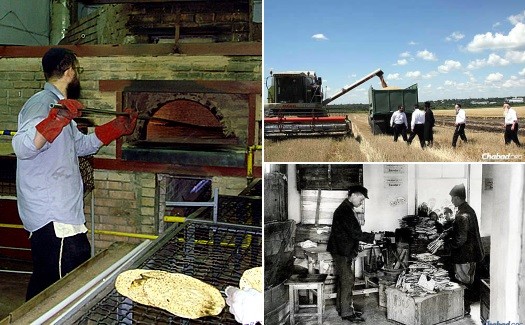
Ukraine Matzah Bakery Continues Its Unique Legacy
At the state-of-the-art Tiferes Hamatzos bakery in Dnepropetrovsk, Ukraine, matzahs are hand-rolled and baked under strict rabbinical supervision. In this eastern Ukrainian city—the country’s fourth-largest, and historically one of its most Jewish—the crisp, round matzahs are carefully packaged and then shipped throughout Ukraine. But Dnepropetrovsk’s matzah output goes far beyond Ukraine’s redrawn borders; the bakery annually produces more than 70 tons of the crunchy unleavened bread, much of which is sent abroad and made available to consumers in Europe, the Americas and even Israel.
For generations, matzah-baking in the Soviet Union was a hidden, secretive affair. Despite its constantly shifting legal status, with matzah production deemed a crime in some years and legal during others, baking matzah and celebrating Passover was never exactly safe.
Nevertheless, from the onset of Communist rule in the early 1920s to that regime’s demise in 1991, matzah remained a staple for millions of Jews in the Soviet Union. Whether baked in the relative privacy of home or purchased at the local synagogue in exchange for government rations, matzah remained one of the last connections to Jewish life for a people who were otherwise all but cut off from their spiritual heritage.
During Soviet times, Jews living in smaller cities and settlements were unable to bake their own matzahs, and therefore had to receive shipments from bigger cities such as Moscow, Leningrad and Kiev. After the breakdown of the Soviet Union and the independence of its republics, these shipments continued; Dnepropetrovsk, Ukraine, for years received its matzah from Moscow. When Dnepropetrovsk began baking its own matzahs in 2002, it naturally exported them to Russia for sale.
Today, that is no longer possible.
Matzah production may not have been affected by the ongoing war between Ukraine and rebel forces a few hundred kilometers to the east, but there has been a breakdown in trade relations between Russia and Ukraine as a result of Russia’s purported support for the rebels. That means that while Ukrainian matzahs are shipped around the world, this year they will not be available for Passover use just across the border in Russia.
Secret Consumption, Resulting Charges
By the early 1920s, the new Bolshevik regime began consolidating its control over Russia, going on the offensive against organized religion. It wasn’t only Judaism that they attacked; all religions were targeted. But the members of the Yevsektzia—the Jewish section of the Communist Party—went after their own people with a special gusto. (Anti-Semitism and anti-Jewish actions remained central to the Soviet apparatus long after the Yevsektzia’s disbandment in 1930 and Stalin’s purging of its ranks later that decade.)
Private religious practice was legal according to the Soviet constitution, but that did not mean the Yevsektzia would make it easy. It was through their efforts that synagogues in cities from Vitebsk to Minsk and all the way south to Odessa were snatched from the Jewish communities that had built them; they were then transformed into workers’ clubs. The months leading up to a Jewish holiday saw the launch of vicious anti-religious campaigns with a special emphasis placed on mocking Passover and all of its rituals. Yiddish-language Communist papers such as Moscow’s Emes and Kharkov’s Der Shtern would opine viciously, calling on the government to ban matzah. They also encouraged readers to hold “Red Seders” (state-sponsored gatherings where the Passover story was rewritten as the struggle of the proletariat against the bourgeoisie) in opposition to what they called “foolish” religious ones.
Punishment for Communist Party members who were discovered to have procured matzah was swift. In 1923, the Jewish Telegraph Agency reported that 20 Jewish Communists were facing trial for having baked matzah in secret. The next year, a Jewish Bolshevik in Gomel with the surname of Lew was kicked out of the party for having acquired matzah for himself and his family, and for running a seder. A 1928 report said that the Komsomol—the Communist youth organization—specifically warned its members not to help their parents prepare for Passover, attend a seder or eat matzah.
Yet despite the pressures they faced, Jews of all observance levels risked their futures and careers to obtain matzah for their families.
“Those early years were terrible times. When I was growing up, I remember going together with my father to the shul to buy matzah,” recounts ShmuelLazerovich, 94, who was raised in the small central Ukrainian town of Uman. “In the big cities it was easier, but in the small towns it was hidden because everyone can see you. You had to hide from the party members and the Komsomol and the young Communist pioneers. It was legal, but we were very quiet about it.”
Matzah became harder to find as years of Soviet rule continued. Following the arrest and subsequent exile of the sixth Lubavitcher Rebbe—Rabbi Yosef Yitzchak Schneersohn, of righteous memory—from the Soviet Union in 1927, he worked assiduously on behalf of his struggling brethren behind the Iron Curtain.
Under the Rebbe’s direction, large amounts of money were raised to buy matzah to send into Russia, with the Rebbe himself issuing appeals to Jewish communities around the world to help carry the financial burdens of the massive undertaking.
“When the matzoth reach Russia, they will be distributed in different cities, with the permission of the Soviet government” the Rebbe said in a statement to JTA’s Berlin correspondent in 1929. “If we do not succeed in supplying Russian Jews with matzoth they will be compelled to suffer for eight days.”
The urgent appeals sent out by the Rebbe were answered by the American Jewish Joint Distribution Committee, and by private and communal donations from Jews in America and around the world.
They were matched with outrage by the Communist press, who urged Jews living in the worker’s paradise to return any packages received from abroad. Jews in Russia involved with accepting shipments of matzah for distribution or with baking matzah themselves were often charged with financial crimes such as speculation. For suggesting that the Jews of Russia could possibly be lacking something and need help from foreigners, they could also be accused with the more general allegation of counter-revolutionary activities. That same year, in 1929, 11 elderly leaders of the Leningrad Kehillah were sentenced to hard labor for, among other crimes, accepting 80,000 kilos of matzah from abroad.
Though the consequences for matzah-baking and its consumption kept getting harsher, the reality remained: Millions of Jews were doing whatever they could each year to get their hands on the unleavened bread—the bread of healing and of faith.
The Battle of the Chief Rabbi
Surrounded by yellow fields of waving corn and wheat, Dnepropetrovsk is a significant source of flour for Ukraine, as it was for the Soviet Empire. In 1939, at the height of Stalin’s terror and in the midst of a severe flour shortage, the city’s chief rabbi—Rabbi Levi Yitzchak Schneersohn, of righteous memory—was approached and asked to give kosher certification to the Passover flour, which would then be sent to communities around the country for use in baking matzahs.
(The government’s official position on matzah-baking was opaque; in 1932, the government held protracted negotiations with Manischewitz to import millions of dollars’ worth of matzah to be sold in government stores, although the talks later broke down. In 1933, the government first refused and then gave permission for the Moscow Jewish community to operate a matzah bakery. Most prosecutions related to matzah used trumped-up financial crimes as the cudgel with which to beat the defendant.)
Rabbi Levi Yitzchak’s son, the Lubavitcher Rebbe—Rabbi Menachem M. Schneerson, of righteous memory—often repeated the story of his father’s resilience in the face of pressure. “Since it was needed for Passover, they wanted the certification of the chief rabbi that it was kosher for Passover,” the Rebbe told a group of children in 1984. “ … My father answered that he would gladly take upon himself this responsibility, but with one condition which is self-understood: that if he gives his certification that the flour is kosher for Passover, he needs to be certain by appointing his own supervisors who will ensure that the wheat milled into flour is kosher, with no water, and that the whole milling process is also free of water.”
Since the extra kosher precautions Rabbi Levi Yitzchak insisted on would incur additional expenses by the government-owned mills, the city government accused the venerable rabbi of being a saboteur. The Rebbe explained that his father “answered them that in accordance with the [Soviet] constitution and in accordance with his conscience, and in accordance with the conscience of every normal person, if he gives his certification that something is kosher, he must be certain of it, and no one could force him to write that which is against his conscience.”
Hearing this, the officials suggested that if he wanted to make any changes, Rabbi Levi Yitzchak ought to take it up with the proper authorities in Moscow.
So the rabbi traveled to Moscow, where he succeeded in meeting with the Soviet Union’s head of state, Mikhail Kalinin. Through Kalinin’s intervention, Rabbi Levi Yitzchak’s kosher flour and matzah production took place unhindered that year.
Many Jews of the Soviet Union celebrated their people’s freedom from Egypt with kosher matzah thanks to Rabbi Levi Yitzchak, but his fate was different. Eight days before Passover, Rabbi Levi Yitzchak was arrested by the NKVD—the beginning of a saga that would end five years later, when he passed away ill and frail, exiled in faraway Kazakhstan.
Years later, Rebbetzin Chana Schneerson—Rabbi Levi Yitzchak’s wife and the Rebbe’s mother—wrote of the matzah story in a bittersweet voice: “It cost him much of his own health to ensure that other Jews would enjoy the festival. He himself, however, would experience no Passover Yom Tov joy of his own. By then, he was already under lock and key. For the eight days of Passover, he managed with just water and the small package of matzoh he had taken along with him.”
During a 3 a.m. interrogation at the hands of Stalin’s NKVD, the rabbi was asked how he had been able to carry out such a major matzah-baking operation for religious reasons during a flour and food shortage. Rebbetzin Chana recounted her husband’s answer. “My husband replied simply: ‘When I visited Kalinin, I bribed him, so he gave me a permit.’ The interrogator, may his name be erased, was speechless.”
‘More Than Just a Business’
The fact that Dnepropetrovsk has become among the world’s largest exporters of kosher matzah is an irony not lost on the city’s current chief rabbi, head Chabad emissary Rabbi Shmuel Kaminezki.
“It’s no doubt something which is unbelievable,” says Kaminezki. “We know kosher matzah was so important to Rabbi Levi Yitzchak, and today, we are going out to the same wheat fields as he did. As a Lubavitcher, it is very emotional to walk into the matzah bakery in Dnepropetrovsk, knowing how Rabbi Levi Yitzchak sacrificed his life for matzah specifically and religious observance in general.”
The Tiferes Hamatzos bakery was founded Dnepropetrovsk in 2002 by the late Rabbi Yaakov Stambler, who also owned the massive matzah bakery in Kfar Chabad, Israel. A Russian immigrant himself, Stambler was born in Tashkent, Soviet Uzbekistan, where his father operated a secret matzah bakery for the small Chassidic community that lived in Uzebekistan for decades after World War II.
“At 12 a.m., my grandparent’s apartment became a matzah bakery,” says Yaakov’s son, Rabbi Mayer Stambler, a Chabad emissary in Dnepropetrovsk and director of the Federation of Jewish Communities of Ukraine. “My father’s bed was on top of the oven. So for our family, matzah has always been more than just a business.”
Stambler’s father emigrated from Russia in 1966, settling in Kfar Chabad in 1980, where he bought a small local matzah bakery that he transformed into a factory. Chabad outreach activities in Israel meant groups from all over came to tour the matzah bakery, and when the elder Stambler decided to build a new one, it was designed with tour groups in mind.
“The Rebbe gave special attention to the matzah bakery and asked how many people had visited that year,” says Stambler. “Ask any Israeli—most of them have probably toured the matzah bakery in Kfar Chabad.”
Back in Dnepropetrovsk, the bakery provides more than just matzah to locals: Some 100 Jews are employed at the year-round bakery, receiving a job and with it, the satisfaction no handout could provide. “A number of employees,” adds Stella Umanskaya, the bakery’s director, “are refugees from Donetsk and Lugansk.”
Defining the Difference
Umanskaya says growing up in Dnepropetrovsk, she remembers her grandmother making matzah by mixing regular flour, poking holes with a fork and then baking it in their own oven.
Lazerovich, who grew up in Uman but settled in Leningrad after World War II, would present his flour rations at the central synagogue, pay a few extra rubles, and then receive matzah that had been baked in the synagogue’s basement. Similar setups existed throughout the Soviet Union, with all those purchasing matzah required to sign their name on a list that was turned over to the KGB.
Contrary to conventional wisdom, matzah actually became harder to purchase after 1957 and was banned outright in 1961. By 1965, international pressure forced the Soviet government to soften their stance somewhat and again allow some synagogues to bake matzahs.
“People would stand in line for hours with their ticket, which had their name on it, to pick up matzah,” explains Stambler. “In the smaller cities such as Dnepropetrovsk, where in post-war years they did not bake matzah, people had to sign up first, and the whole list had to be approved by the authorities. It could be that 4,000 kilos of matzah was requested, but the authorities only allowed for 3,000. Then a shipment would come from Moscow.”
Jews who were worried for their careers and social lives would often avoid placing their names on the communal lists, using an elderly grandparent’s name instead. Others, like 94-year-old Lazerovich, tipped the workers generously, and in return got matzah minus the documents. “The boys used to give me a big box which I would distribute to my whole family,” he recalls. “My parents couldn’t get it in Uman, so while they were alive I always sent some to them.”
“When I first came to Dnepropetrovsk in 1992,” says Stambler, “before Pesachwe would get frantic phone calls from all sorts of Jews, ‘Will there be matzah? Are you baking matzah?’ It was everyone’s question here.”
What was it about matzah that gave it so essential a role in the lives of Soviet Jews?
“Matzah is the symbol of Passover,” says Lazerovich, “and Passover is when the Jewish people became free, became a nation. The Communists could not accept this; they said everyone was the same. Matzah meant we were different.”

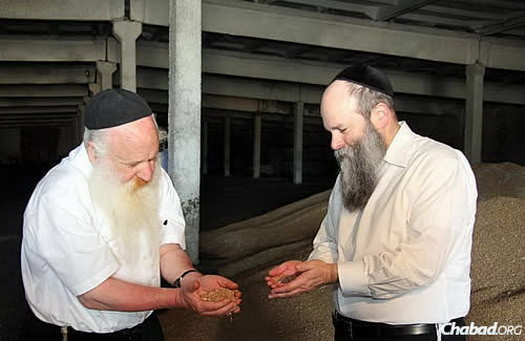
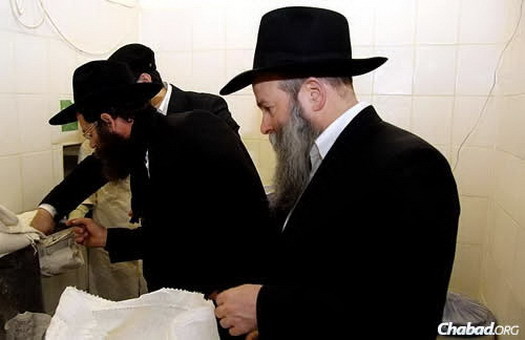
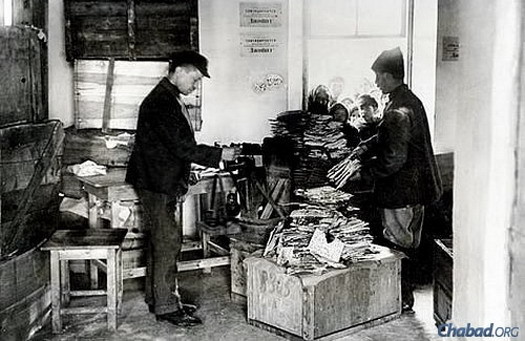



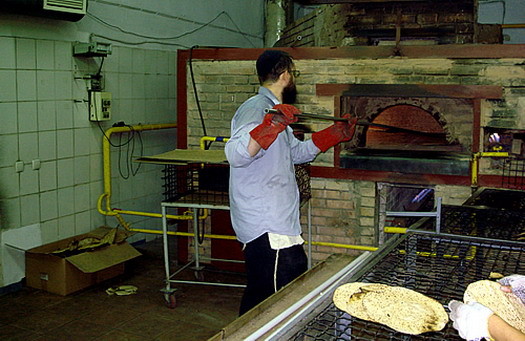
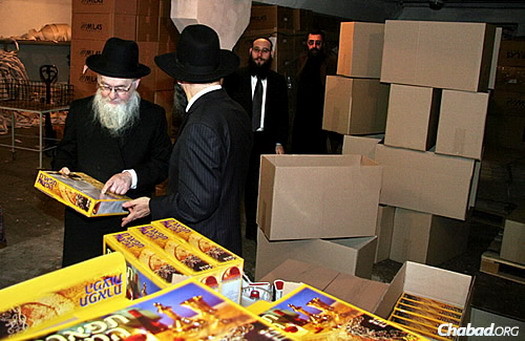

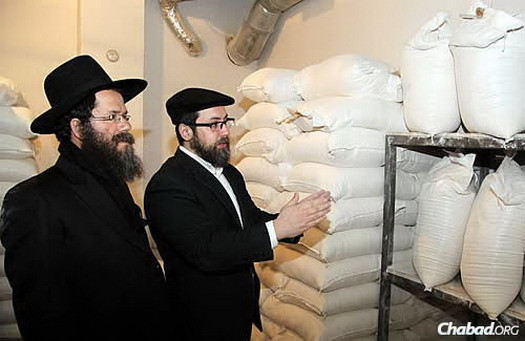












Australia
This matzoh is also eaten throughout Australia.
Cheapest and best. Thanks for bringing it in.
yakov
amazing.
A Lubave
Thought Chabad doesn’t hold of “finner”……just saying.
BMMNPL
Bought 2 boxes of Tiferes Mazos in Ceadar Market in Teaneck NJ and both boxes contained ALL broken pieces. Did not have any shmurah matza for the two seders. What good is calling it shmurah matza if none of the pieces can be used for seder?
The matza is packed in thin tissue paper and apparently not enough care is taken in delivering the matzos unbroken to the retail customer. The shmurah stops after it leaves the factory.
More care is needed in packing & shipping.
It would be nice if the matzos could be packed in a CLEAR box so that unsuspecting consumers can see the merchandise, before buying. No matter what price you pay ($13 or $30 a pound) it’s a total
waste if most of the matzos are broken. A true shmurah matza is one that guarantees the recipient that the matza he gets has been “watched” from beginning to end & can be used at the seders for the mitzvah it was intended for.